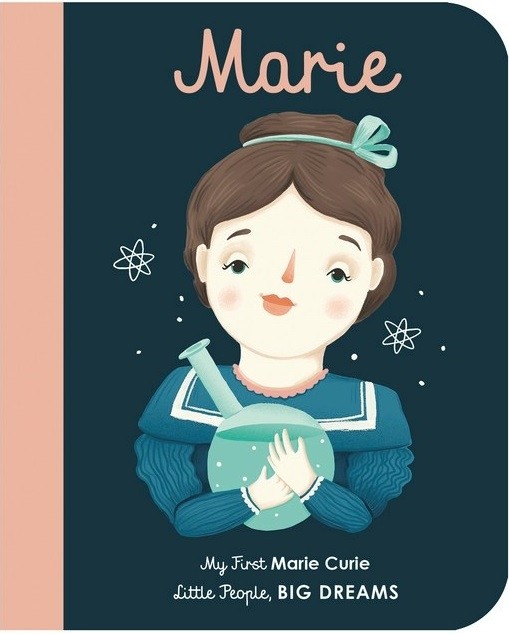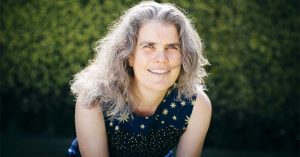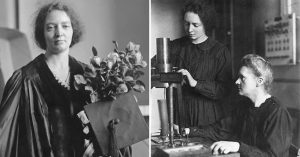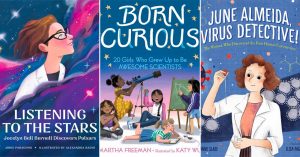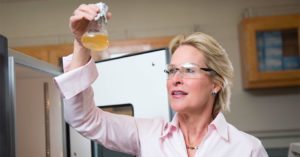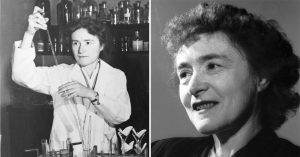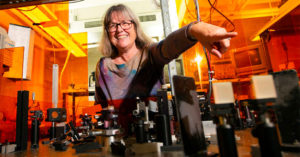Dr. Emmanuelle Charpentier and Dr. Jennifer A. Doudna's development of a groundbreaking method for editing DNA which is widely considered the greatest breakthrough in the biological sciences since DNA was first discovered!
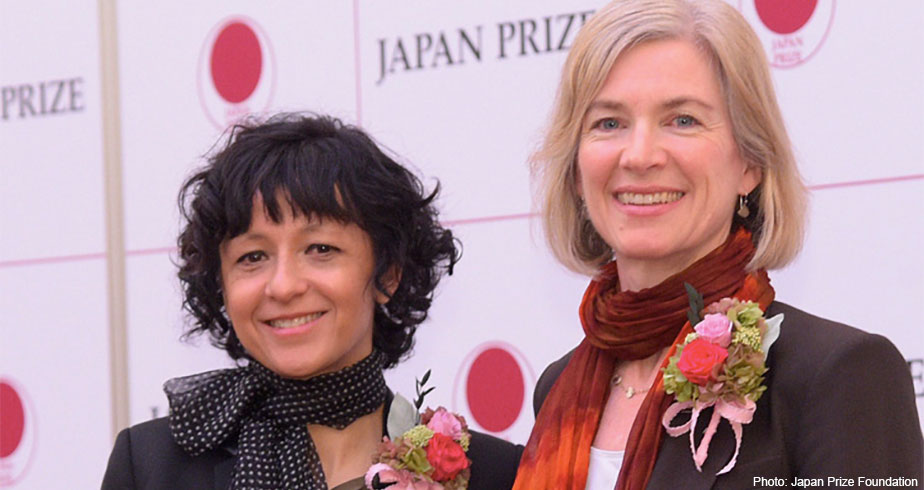 Emmanuelle Charpentier, left, and Jennifer A. Doudna after receiving the Japan Prize for "outstanding achievements in science and technology" in 2017.
Emmanuelle Charpentier, left, and Jennifer A. Doudna after receiving the Japan Prize for "outstanding achievements in science and technology" in 2017.Dr. Emmanuelle Charpentier and Dr. Jennifer A. Doudna were awarded the 2020 Nobel Prize for Chemistry this week for their development of a groundbreaking method for editing DNA which is widely considered the greatest breakthrough in the biological sciences since DNA was first discovered! Doudna, an American biochemist and professor at the University of California, Berkeley, and Charpentier, a French microbiologist and the director of the Max Planck Unit for the Science of Pathogens in Berlin, Germany, discovered the CRISPR/Cas9 genetic scissors, a tool that allows scientists to "snip" the DNA of organisms, allowing for easy and precise genetic modifications. The pair are the first women to jointly win the Nobel Prize in Chemistry, and represent the sixth and seventh women in history to win the chemistry prize. "This technology has utterly transformed the way we do research in basic science," asserts Dr. Francis Collins, director of the National Institutes of Health. "I am thrilled to see Crispr-Cas getting the recognition we have all been waiting for, and seeing two women being recognized as Nobel Laureates."
Doudna was born in Washington, D.C. in 1964 and Charpentier was born in Juvisy-sur-Orge, France in 1968, and while they both pursued careers in biochemistry, it took Streptococcus pyogenes bacteria to bring them together. Charpentier had been studying the bacteria, which causes scarlet fever and other diseases, and while examining its DNA in 2006, she noticed a series of repeating genetic patterns. She knew that other scientists had found fragments of genetic material from attacking viruses captured between the bacteria's repeating DNA segments — which had been named 'clustered regularly interspaced short palindromic repeats' or CRISPR — but nobody was sure how the bacteria's immune response worked. Charpentier and her team helped unravel this mystery when they discovered that the bacteria made a previously unknown form of RNA called tracrRNA that would recognize the genes of viruses if they attempted to attack the bacteria again.
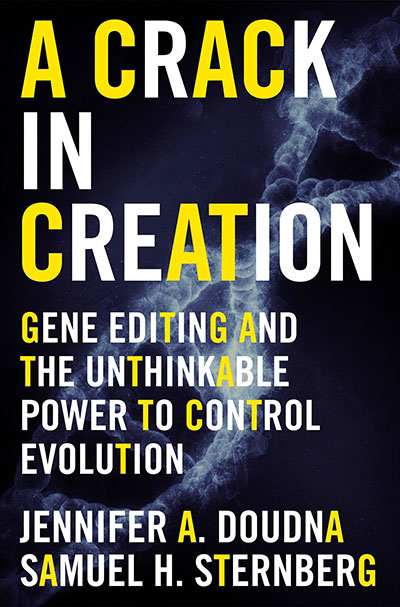 To take her research further, Charpentier knew she needed to collaborate with an expert on RNA. At a scientific conference in 2011, she approached Doudna, who had been studying how bacteria made RNA for other purposes, about a research partnership. They soon began to work together to better understand how the bacteria's defense system worked and discovered that it used an enzyme called Cas9 to slice up viral genetic material and incorporate it into its own DNA.
To take her research further, Charpentier knew she needed to collaborate with an expert on RNA. At a scientific conference in 2011, she approached Doudna, who had been studying how bacteria made RNA for other purposes, about a research partnership. They soon began to work together to better understand how the bacteria's defense system worked and discovered that it used an enzyme called Cas9 to slice up viral genetic material and incorporate it into its own DNA.
This breakthrough opened up a new possibility to the two biochemists: could you create a piece of RNA that could target a specific point on any gene, not just a viral one? In just one year, in 2012, the pair successfully proved their theory by creating a modified RNA segment, known as CRISPR RNA or crRNA, that guides the segment to the right place and then uses Cas9 to snip out a piece of DNA with extreme precision, in some cases as small as a single genetic letter.
The development of CRISPR/Cas9 genetic scissors has revolutionized the biological sciences and given scientists the ability to perform genetic editing on a scale that would have been inconceivable only a decade ago. Their discovery is already commonplace in labs around the world and is being used to develop cancer-fighting drugs, crops that can better withstand drought, and in countless other applications.
The progression of Charpentier and Doudna's research into real-world applications has been incredibly fast, another mark of how transformative their discovery has been to science. As Dr. Collins observes, “Other technologies sometimes take a couple of decades before they come into regular practice." Its impact is also demonstrated by the women being awarded the Nobel Prize only eight years after their initial breakthrough; as David Pendlebury, a senior analyst at Clarivate Analytics notes: "Most Nobel Prizes are based on research achieved two, three, or more decades ago."
Doudna and Charpentier are also both aware of the potential for ethical issues related to their discovery, especially after the scientific scandal that raged after Chinese scientist He Jiankui claimed in 2019 that he had used CRISPR on two human embryos. Doudna explored these issues in her recent book A Crack in Creation: Gene Editing and the Unthinkable Power to Control Evolution, and cautions, "we as a community need to make sure we recognize we are taking charge of a very powerful technology."
Both scientists were thrilled by the news of their Nobel win on Wednesday, with Charpentier saying she "was very emotional" after receiving the call from the Nobel committee. For her part, Charpentier hopes that their win provides a "positive message to the young girls who would like to follow the path of science, and to show them that women in science can also have an impact through the research that they are performing." Tom Welton, president of the Royal Society of Chemistry echoed this sentiment, adding: "I am also hugely pleased to see that the Nobel committee has chosen to honor two leading women in active research — their teamwork is an example of how scientific breakthroughs are based on a truly global community of researchers and they can become role models for aspiring scientists of all genders."
Books And Science Toys To Encourage Aspiring Biochemists
Marie: My First Marie Curie (Little People, Big Dreams)
Marie: My First Marie Curie (Little People, Big Dreams)
Marie Curie wasn't allowed to go to college because she was a woman — but she would become one of the greatest scientists int he world! Curie discovered radium and polonium, studied the powers of radiation, and won Nobel Prizes in both Physics and Chemistry. In this board book from the My First - Little People, BIG DREAMS series, little readers will learn all about Curie's curiosity and determination! For two more picture book about Curie, check out I Am Marie Curie for ages 4 to 8 and Marie Curie (Little People, Big Dreams) for ages 5 to 8.
The Kitchen Pantry Scientist: Chemistry for Kids
Homemade Science Experiments and Activities Inspired by Awesome Chemists, Past and Present
The Kitchen Pantry Scientist: Chemistry for Kids
Homemade Science Experiments and Activities Inspired by Awesome Chemists, Past and Present
You can dive into chemistry with ingredients from your own kitchen in this book from The Kitchen Pantry Scientist series! In Chemistry for Kids, you'll learn about 25 famous chemists past and present — half of them women — including figures like Marie Curie, Alessandra Volta, Tu Youyou, and more. Then, you'll conduct an experiment that explores similar concepts to their famous discoveries, from carbonating a beverage with baking soda and vinegar to extracting compounds from plants. All of the experiments can be done safely by kids, and either use simple materials you have on hand, or inexpensive items that you can easily purchase online! For even more at-home experimentation, check out Kate the Chemist: The Big Book of Experiments for ages 8 to 12.
Marie Curie For Kids
Her Life and Scientific Discoveries, with 21 Activities and Experiments
Marie Curie For Kids
Her Life and Scientific Discoveries, with 21 Activities and Experiments
Over decades of groundbreaking scientific work, Marie Curie created the field of atomic physics and coined the term "radioactivity" — but to do so, she had to overcome many challenges, including prejudice against women in science. In this book, kid can learn about Curie's life while doing hands-on experiments and activities of their own! While reading about Curie's work — including her title as the only person ever to win Nobel Prizes in two different scientific disciplines — kids will also make a model of the element carbon, examine World War I X-rays, and even try their own Polish pierogies. It's an excellent way to step into the shoes of this remarkable and trailblazing scientist.
The Code Breaker Young Readers Edition
Jennifer Doudna and the Race to Understand Our Genetic Code
The Code Breaker Young Readers Edition
Jennifer Doudna and the Race to Understand Our Genetic Code
When Jennifer Doudna was in 6th grade, she read The Double Helix, James Watson's story of discovering the structure of DNA — and she was hooked. She became determined not just to learn more about DNA, but to learn enough about biochemistry to understand RNA, the related molecule that lets genes express themselves. Her expertise in RNA led to her work helping develop CRISPR, a revolutionary technique to edit genes — one that is already being used to target genetic diseases like Tay-Sachs and sickle cell anemia. And today, her team is part of the global effort to fight the novel coronavirus that causes COVID-19. This young reader's edition of The Code Breaker introduces this pioneering scientist and her Nobel Prize-winning work to young readers, who will be inspired to imagine how they too could change the world.
Radioactive!
How Irène Curie and Lise Meitner Revolutionized Science and Changed the World
Radioactive!
How Irène Curie and Lise Meitner Revolutionized Science and Changed the World
In 1934, Irène Curie developed artificial radioactivity with her husband, a discovery that won the couple the Nobel Prize — but Curie was not permitted entry into the French Academy of Sciences, who thereafter banned all women. Four years later, Lise Meitner used Curie's research to help her understand nuclear fission, a discovery that was critical to the nuclear age, but she too was unrecognized by the Nobel Committee, while her colleague was given full credit for their joint research. In this narrative non-fiction book, Winifred Conkling highlights the struggles these groundbreaking women faced in the male-dominated world of research, shedding new light on these remarkable figures from scientific history.
The Code Breaker: Jennifer Doudna, Gene Editing, and the Future of the Human Race
The Code Breaker: Jennifer Doudna, Gene Editing, and the Future of the Human Race
Jennifer Doudna discovered the wonders and mysteries of DNA in sixth grade after reading The Double Helix and she was eager to learn more. More importantly, she wanted to turn discoveries into practical inventions that could make the world better. As an adult, she and her collaborators learned how to use a bacteria's immune defense mechanism to create "genetic scissors" that could edit genes: CRISPR. Their discovery changed science forever, earning Doudna and Emmanuelle Charpentier a Nobel Prize, but it also opened up many moral questions — and Doudna was more than willing to grapple with them. This thrilling biography explores the life and mind of a brilliant woman who has launched a new scientific revolution that will allow us to cure diseases, have healthier babies, fend off viruses, and possibly transform the future in unimaginable ways.
Rosalind Franklin: The Dark Lady of DNA
Rosalind Franklin: The Dark Lady of DNA
When Rosalind Franklin's Photo 51 revealed the double helix structure of DNA, it was a groundbreaking discovery — and she received none of the credit. In this biography, Brenda Maddox describes a determined and fiercely intelligent woman whose photographs of DNA were described as "among the most beautiful X-ray photographs of any substance ever taken." And when Maurice Wilkins, Francis Crick, and James Watson received the 1962 Nobel Prize for discovering DNA's structure, it kicked off a debate about how credit is given (and taken) from women in science that continues to this day. This intriguing portrait of a tempestuous and scientifically talented woman is a unique look at the history of DNA you don't know.
Periodic Table Building Blocks
Periodic Table Building Blocks
Elements are the building blocks of the universe — and now they can be the building blocks of your toy box with this fun set from Uncle Goose! 20 solid wood building blocks, made in the US from sustainable Michigan basswood, feature the elements of the periodic table painted in non-toxic, child-safe inks. And even though they're building blocks, don't think they're just for babies — chemistry geeks will love these colorful blocks as much at 36 years as 36 months! For two more of Uncle Goose's science-themed block sets, check out the Dinosaur Blocks and the Fossil Blocks.
Yellow Scope DNA & Traits Kit
Yellow Scope DNA & Traits Kit
Unravel the secrets of DNA and genetics with this kit from Yellow Scope! As you follow along with the experiments in the 32-page guide, you'll pull DNA strands out of fruit and your own cheek cells, learn about quirky traits in your family and friends, and use "DNA codes" to make monsters with silly faces! The easy to follow step-by-step guide builds confidence, and girls will love showing off their growing knowledge! For another fun kit to learn how DNA works, check out the K'Nex DNA Replications and Transcription Set for ages 8 to 13.
Chemistry C500
Chemistry C500
If you're interested in learning chemistry, this kit from Thames & Kosmos is a great place to start! The C500 chemistry kit introduces seven central areas of chemistry through 30 classic experiments. Kids will learn about reactions between solids, liquids, and gases; find out about acids and bases; and try some electrochemistry with metals and salts. Almost everything you need is included in this set, including a full-color experiment guide that lets her know how the chemical principles work in practice. As kids advance their knowledge, they can also get more elaborate kits from the same series, including the C1000 Kit and the C2000 kit, both for ages 10 and up, and the C3000 kit for ages 12 and up.
Science Ninjas: Valence Card Game
Science Ninjas: Valence Card Game
Turn chemistry into a game with this fascinating game that lets kids tinker with chemicals without setting foot in a lab! Weave together elements to create molecules and cause different reactions. The more you create, the more points you win, but be careful! Some combinations can have unexpected -- and dramatic -- results. Best of all, everything that happens in the game is something that happens in real-life science. Fans of this game can also check out Science Ninjas: Valence Plus, an expanded edition that adds 30 more cards with all-new artwork for even more elements and molecules.









